

Gosh it's September and across the top fruit industry, growers are getting ready for the harvest of apples which will be stored long term allowing the availability of British apples until next summer.
The harvest of apples for long term storage begins with Bramley, our revered British culinary apple which normally starts in early September. Talking to a leading grower, who normally would pick some of his Bramley for the early market, he tells me that with some of last year's crop still being marketed, and this year's crop half of 2022 he is picking Bramley for long term storage to maximise this year's monetary value.
Conference pears are of very good size and are already being picked for long term storage.
Meanwhile apple stores for storing throughout the winter are being readied for use with storage specialists carrying out service checks.
To see what growers are doing as they approach a new season: Click on Apple Storage from a previous English Apple Man Journal
Apple stores can be categorized as; 'short term' - 'medium term' - and 'long term'
Modern storage centres are located in a large building with two rows of chambers located either side of a central avenue. The individual chambers will accommodate either C/A (controlled atmosphere) stores or DCA (dynamic atmosphere) stores. The central avenue will be refrigerated and used as a 'pre-cool' area for fruit en route to store or/and typically for short term storage of later picked fruit targeted for early marketing.
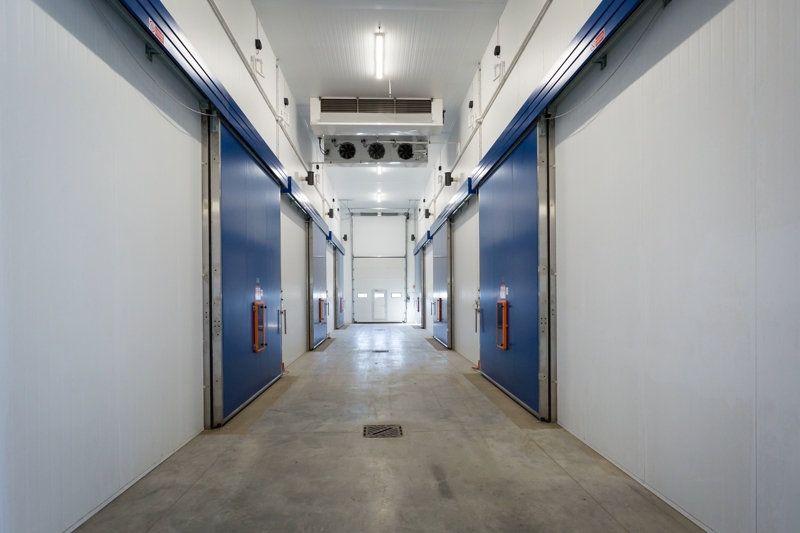
Pre season preparations
Modern fruit stores depend on an 'airtight' box capable of holding a very low levels of oxygen and the first tests are to ensure no damage has occurred in the previous season/or after. So by closing the doors and using a vacuum test sucking air from the store and timing the period the chamber holds air tightness is a sensible measure before the new season.
Specialist Cold Storage engineers will carry out service checks to ensure refrigerant levels are correct, with no leakage. Refrigeration Compressors will be run to ensure efficacy of temperature pull down!
Each chamber will have a number of probes which monitor the temperature across the store at different heights and locations.
Instrumentation. The ideal time to carry out a service will be when the stores are empty, enabling us to check and calibrate individual probes as well as overhauling the larger plant. A record of all tests carried out, including detailed results, will be provided for your records.
A quick guide:
The English Apple Man draws on the expertise of Jon Hatch at UKCA Ltd
Across each line: Store numbers, product probe check at 0.0 degrees C to ensure all probes read within +/- 0.2 degrees.
Sample line check to ensure lines are not leaking and the analysed gas in the store is correct! then system check Vent fan, scrubber valves,n2 valves etc.. if System is DCA we would plug in the sensors to ensure there are no errors.
Then analyser check and calibration, pump and sample box, check over.
C/A v DCA - Dynamic Controlled Atmosphere.
C/A
The Storage of Apples & Pears is a vital part of the seasonal supply; without the sophisticated storage used by our growers, the eating quality would be far below the standard we enjoy today. The latest storage development now gaining credibility is 'Dynamic Controlled Atmosphere (DCA) Storage'
Traditional long term storage, relies on the use of 'researched' regimes to ensure each variety is kept in a storage regime using pre-set levels of; 1) Temperature. 2) Oxygen. 3) Carbon Dioxide.
Temperature. Each variety needs to be stored at a temperature specific to that variety; while some can be stored at 1 degree C, others will develop internal disorders if kept for a longer term in that regime.
Oxygen. For successful long term storage the Oxygen available to the fruit in store should be just enough to allow the fruit to 'stay alive' that is to say, by depriving the fruit of oxygen we can slow the respiration of the apple down to a level where the fruit is just breathing. This keeps the fruit in 'tip top' condition for several months (depending on variety) however if the oxygen level drops too low, the process of fermentation begins and the fruit will become alcoholic, resulting in total loss of he fruit for any useful purpose.
Carbon Dioxide. The level of C02 inside the store has a critical part to play in the success of fruit in long term storage, for as the Oxygen level drops, the C02 level rises. For many varieties; Cox for instance, the level must remain below 1% or internal disorders (browning) will develop. But other varieties; Bramley for instance, require higher levels of C02 to keep the green background colour; starved of C02 a Bramley will go yellow in store. Excess C02 can be removed from the store environment by using lime or carbon scrubbers to 'adsorb' the excess C02.
SO, having set the regime; Temperature + Oxygen + C02 to the required level for the variety in store, we monitor and manage the conditions by various strategies.
Temperature is controlled by temperature readings from in store probes.
Oxygen & C02 readings taken by an O2 & C02 analysers which sample the store air on an hourly basis.
The readings are fed back to a computer control system which follows the pre-set programme and keeps the fruit in the appropriate regime.
DYNAMIC CA Storage is quite different; instead of setting the regime within the known parameters (safe conditions) DCA monitors the performance of the fruit and responds accordingly.
The monitors; fluorescence interactive response monitor; are connected to a computer control system and the operator adjusts oxygen levels in response to any fluctuations in the fluorescence signals. This system monitors the chlorophyl levels in the fruit by measuring the change in the green colour of the apple in the monitor boxes.
Below: left. preparing monitor samples for DCA store and right. Example of storage samples in a store setting
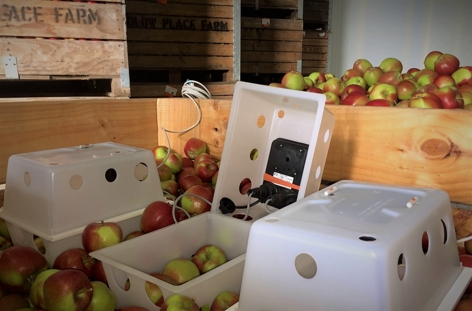
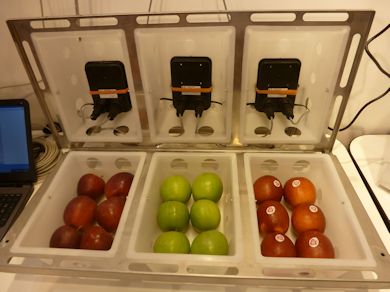
This is one type of DCA technology that is being marketed and used commercially. However, it is not the only way to utilize lower oxygen levels for programmable CA storage.
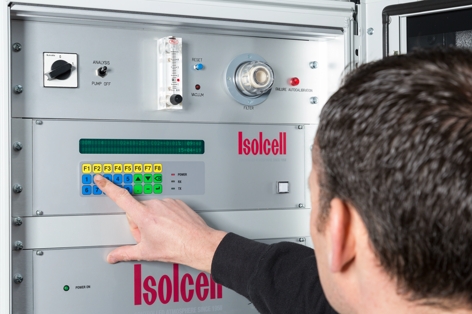
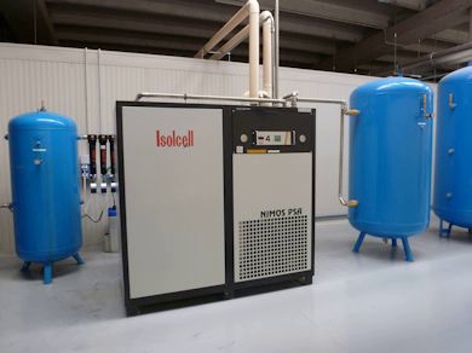
The use of low oxygen by measuring the alcohol content of apples and adjusting the oxygen level accordingly is another.
Either way, the system of monitoring the fruit and reacting to the status is 'the way forward' for long term storage. The potential gain is not just an ability to ensure the fruit stores in prime condition for a longer period, but one in which the moisture loss is significantly reduced; both the consumer and grower benefit; the consumer will enjoy an apple with a superior texture and the grower will benefit from a reduction in weight loss. This is a significant gain for both!
In general, the lower the oxygen concentration, the longer the fruit can be stored. There is, however, a lower limit in terms of oxygen concentration, at which point fermentation will commence; this can reduce the quality of the fruit (and its shelf life, as a result). This is why 'safe' O2 concentrations, i.e. usually slightly over 1%, are usually used for storage.
Dynamic CA storage means that the fruit is automatically stored at optimum conditions which are constantly adjusted on the basis of the fruit's respiratory activity. Oxygen percentages of less than 1% are no problem because the oxygen concentration will be immediately amended if it threatens to get too low.
Looking ahead, the timing of harvest for mid and late season varieties indicates Conference imminent.
Cox and Gala mid September, Jazz second week of October, Braeburn 3rd week of October?
![]() That is all for this week
That is all for this week
Take care
The English Apple Man